
A game show is a genre of broadcast viewing entertainment where contestants compete for rewards. The shows are typically directed by a host, who explains the rules of the game as well as commentating and narrating where necessary. The history of the game shows dates back to the late 1930s when both radio and television game shows were broadcast. The genre became popular in the United States in the 1950s, becoming a regular feature of daytime television.

The Price Is Right is an American television game show where contestants compete by guessing the prices of merchandise to win cash and prizes. A 1972 revival by Mark Goodson and Bill Todman of their 1956–1965 show of the same name, the new version added many distinctive gameplay elements. Contestants are selected from the studio audience: the announcer calls their name, invoking them to "Come on down!", the show's famous catchphrase.

The $64,000 Question was an American game show broadcast in primetime on CBS-TV from 1955 to 1958, which became embroiled in the 1950s quiz show scandals. Contestants answered general knowledge questions, earning money which doubled as the questions became more difficult. The final question had a top prize of $64,000, hence the "$64,000 Question" in the show's title.

Monty Hall was a Canadian-American radio and television show host who moved to the United States in 1955 to pursue a career in broadcasting. After working as a radio newsreader and sportscaster, Hall returned to television in the U.S., this time in game shows. Starting in 1963, he was best known as the game show host and producer of Let's Make a Deal. He had a conundrum with game theory and psychology aspects named after him: the Monty Hall problem. Behind the scenes, Hall also carried on an active life of philanthropy.
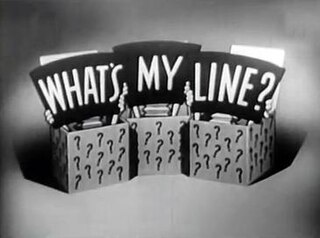
What's My Line? is a panel game show that originally ran in the United States, between 1950 and 1967, on CBS. The game show started in black and white and later in color, with subsequent U.S. revivals. The game uses celebrity panelists to question contestants in order to determine their occupation. The majority of the contestants were from the general public, but there was one weekly celebrity "mystery guest" for which the panelists were blindfolded. It is on the list of longest-running U.S. primetime network television game-shows. Originally moderated by John Charles Daly and most frequently with regular panelists Dorothy Kilgallen, Arlene Francis, and Bennett Cerf, What's My Line? won three Emmy Awards for "Best Quiz or Audience Participation Show" in 1952, 1953, and 1958 and the Golden Globe Awards for Best TV Show in 1962.

Beat the Clock is an American television game show that involves people trying to complete challenges to win prizes while faced with a time limit. The show was a creation of Mark Goodson-Bill Todman Productions.

Truth or Consequences is an American game show originally hosted on NBC radio by Ralph Edwards (1940–1957) and later on television by Edwards (1950–1954), Jack Bailey (1954–1956), Bob Barker (1956–1975), Steve Dunne (1957–1958), Bob Hilton (1977–1978) and Larry Anderson (1987–1988). The television show ran on CBS, NBC and also in syndication. The premise of the show was to mix the original quiz element of game shows with wacky stunts.

I've Got a Secret is an American panel game show produced by Mark Goodson and Bill Todman for CBS television. Created by comedy writers Allan Sherman and Howard Merrill, it was a derivative of Goodson–Todman's own panel show, What's My Line?. Instead of celebrity panelists trying to determine a contestant's occupation, however, as in What's My Line, the panel tried to determine a contestant's secret: something that is unusual, amazing, embarrassing, or humorous about that person.
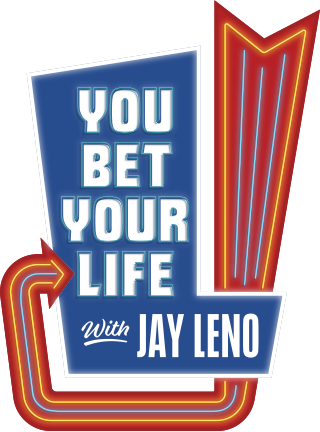
You Bet Your Life is an American comedy quiz series that has aired on both radio and television. The original version was hosted by Groucho Marx of the Marx Brothers, with announcer and assistant George Fenneman. The show debuted on ABC Radio on October 27, 1947, moved to CBS Radio debuting October 5, 1949, and went to NBC-TV and NBC Radio on October 4, 1950. Because of its simple format, it was possible to broadcast the show on both radio and television but not simultaneously. Many of the laughs on the television show were evoked by Groucho's facial reactions and other visual gimmicks; the two versions were slightly different. The last episode in a radio format aired on June 10, 1960. The series continued on television for another year, recording a season on September 22, 1960 with a new title, The Groucho Show.
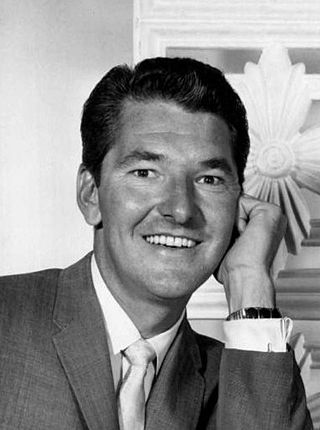
John Lawrence Narz Jr. was an American radio personality, television host, and singer.

Luis Antonio Dámaso de Alonso, known professionally as Gilbert Roland, was a Mexican-born American film and television actor whose career spanned seven decades from the 1920s until the 1980s. He was twice nominated for the Golden Globe Award in 1952 and 1964 and inducted into the Hollywood Walk of Fame in 1960.

Jackpot is an American and Canadian television game show produced by Bob Stewart which saw contestants attempting to solve riddles in order to win cash and prizes.
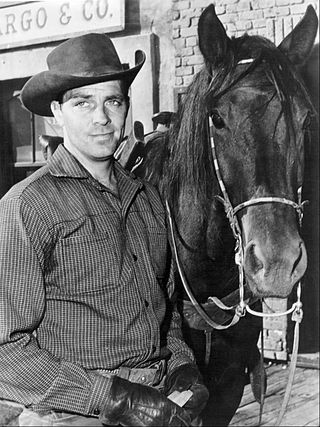
Dayle Lymoine Robertson was an American actor best known for his starring roles on television. He played the roving investigator Jim Hardie in the television series Tales of Wells Fargo and railroad owner Ben Calhoun in Iron Horse. He often was presented as a deceptively thoughtful but modest Western hero. From 1968 to 1970, Robertson was the fourth and final host of the anthology series Death Valley Days. Described by Time magazine in 1959 as "probably the best horseman on television", for most of his career, Robertson played in western films and television shows—well over 60 titles in all.
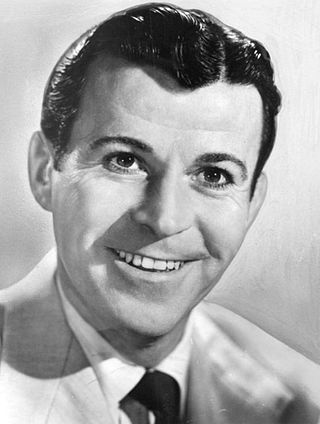
Dennis Day was an American actor, comedian and singer. He was of Irish descent.
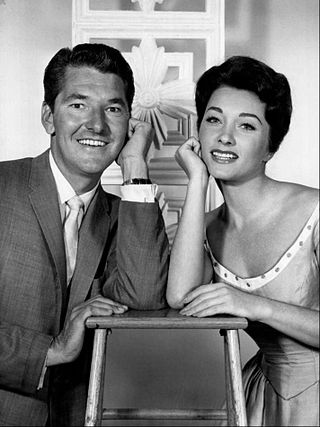
Video Village is an American television game show produced by Heatter-Quigley Productions, which aired on the CBS network in daytime from July 11, 1960, to June 15, 1962, and in primetime from July 1 to September 16, 1960. It was notable for the use of its unique "living board game" concept and for premiering soon after the quiz show scandals.

John Wesley Bailey Jr. was an American actor and daytime game show host.
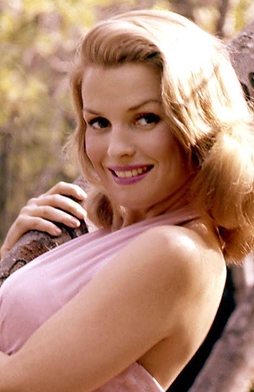
Patricia Ann Sheehan, also known as Patricia Sheehan Crosby, was an American actress and model. She was Playboy magazine's Playmate of the Month for October 1958 and a contract player for NBC.

The Price Is Right is an American game show produced by Mark Goodson-Bill Todman Productions, wherein contestants placed successive bids on merchandise prizes with the goal of bidding closest to each prize's actual retail price without surpassing it. The show was a precursor to the current and best-known version of the program, which premiered in 1972 on CBS's daytime schedule. It makes The Price Is Right one of only a few game show franchises to have aired in some form across all three of the Big Three television networks.

Wheel of Fortune is an American television game show created by Merv Griffin. The show has aired continuously since January 1975. It features a competition in which contestants solve word puzzles, similar to those in hangman, to win cash and prizes determined by spinning a giant carnival wheel. The current version of the series, which airs in nightly syndication, premiered on September 19, 1983. It stars Pat Sajak and Vanna White as hosts, who have hosted the nighttime version since its inception. The original version of Wheel was a network daytime series that ran on NBC from January 6, 1975, to June 30, 1989, and subsequently aired on CBS from July 17, 1989, to January 11, 1991; it returned to NBC on January 14, 1991, and was cancelled that year, ending on September 20, 1991.
Jeopardy! is an American television game show created by Merv Griffin. The show is a quiz competition that reverses the traditional question-and-answer format of many quiz shows. Rather than being given questions, contestants are instead given general knowledge clues in the form of answers and they must identify the person, place, thing, or idea that the clue describes, phrasing each response in the form of a question.



















